A comic strip is a sequence of cartoons, arranged in interrelated panels to display brief humor or form a narrative, often serialized, with text in balloons and captions. Traditionally, throughout the 20th and into the 21st century, these have been published in newspapers and magazines, with daily horizontal strips printed in black-and-white in newspapers, while Sunday papers offered longer sequences in special color comics sections. With the advent of the internet, online comic strips began to appear as webcomics.

Betty Boop is an animated cartoon character designed by Grim Natwick at the request of Max Fleischer. She originally appeared in the Talkartoon and Betty Boop film series, which were produced by Fleischer Studios and released by Paramount Pictures. She was featured in 90 theatrical cartoons between 1930 and 1939. She has also been featured in comic strips and mass merchandising.
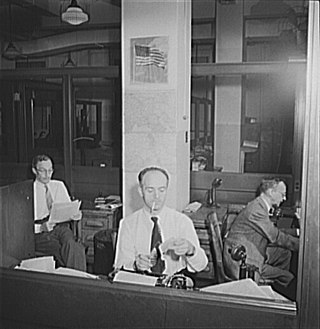
Print syndication distributes news articles, columns, political cartoons, comic strips and other features to newspapers, magazines and websites. The syndicates offer reprint rights and grant permissions to other parties for republishing content of which they own and/or represent copyrights. Other terms for the service include a newspaper syndicate, a press syndicate, and a feature syndicate.

Marjorie Henderson Buell was an American cartoonist who worked under the pen name Marge. She was best known as the creator of Little Lulu.

King Features Syndicate, Inc. is an American content distribution and animation studio, consumer product licensing and print syndication company owned by Hearst Communications that distributes about 150 comic strips, newspaper columns, editorial cartoons, puzzles, and games to nearly 5,000 newspapers worldwide. King Features Syndicate also produces intellectual properties, develops new content and franchises, like The Cuphead Show!, which it produced with Netflix, and licenses its classic characters and properties.
A daily strip is a newspaper comic strip format, appearing on weekdays, Monday through Saturday, as contrasted with a Sunday strip, which typically only appears on Sundays. They typically are smaller, 3–4 grids compared to the full page Sunday strip and are black and white.
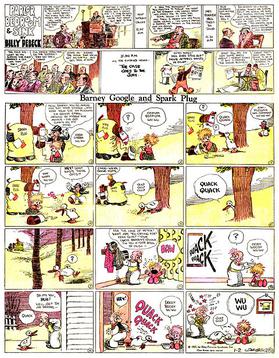
The Sunday comics or Sunday strip is the comic strip section carried in most western newspapers. Compared to weekday comics, Sunday comics tend to be full pages and are in color. Many newspaper readers called this section the Sunday funnies, the funny papers or simply the funnies.

Carl Thomas Anderson was an American cartoonist best remembered for his comic strip Henry. Readers followed the pantomime adventures of the mute, bald-headed Henry in strips which he signed with his familiar signature displaying an enlarged "S": Carl AnderSon.

The Little King is an American gag-a-day comic strip created by Otto Soglow, which ran from 1930 to 1975. Its stories are told in a style using images and very few words, as in pantomime.

Henry Boltinoff was an American cartoonist who worked for both comic strips and comic books. He was a prolific cartoonist and drew many of the humor and filler strips that appeared in National Periodical comics from the 1940s through the 1960s.

Betty Boop and the Little King is a 1936 Fleischer Studio animated short film, starring Betty Boop and featuring Otto Soglow's Little King.
Betty Boop with Henry, the Funniest Living American is a 1935 Fleischer Studios animated short film starring Betty Boop, and featuring Carl Anderson's Henry. The short was also released as Betty Boop with Henry.

Little Jimmy, originally titled Jimmy, is a newspaper comic strip created by Jimmy Swinnerton. With a publication history from February 14, 1904, to April 27, 1958, it was one of the first continuing features and one of the longest running.
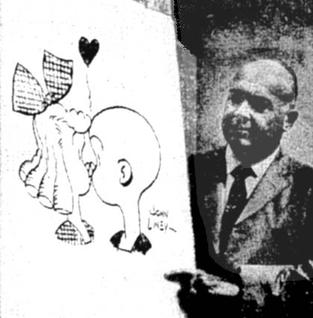
John J. Liney was an American cartoonist who drew the daily Henry comic strip for 44 years.
A comic strip syndicate functions as an agent for cartoonists and comic strip creators, placing the cartoons and strips in as many newspapers as possible on behalf of the artist. A syndicate can annually receive thousands of submissions, from which only two or three might be selected for representation. In some cases, the work will be owned by the syndicate as opposed to the creator. The Guinness World Record for the world's most syndicated strip belongs to Jim Davis' Garfield, which at that point (2002) appeared in 2,570 newspapers, with 263 million readers worldwide.
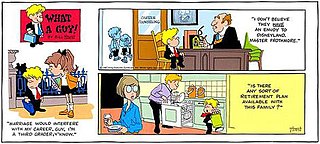
What a Guy! is an American comic strip created by Bill Hoest and Bunny Hoest, the team responsible for The Lockhorns and Agatha Crumm. It began in March 1987, just over a year before Hoest's death in 1988.
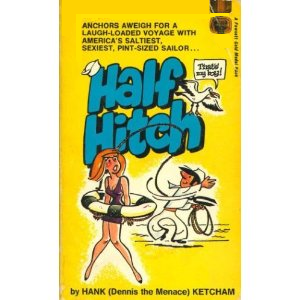
Half Hitch is an American comic strip by Hank Ketcham, in syndication first between 1943 and 1945 and later from 1970 to 1975. It is an example of military humor, but unlike most cartoons and comics of this genre, is focused on the navy, rather than the army. The unnamed character first appeared in The Saturday Evening Post in 1943.
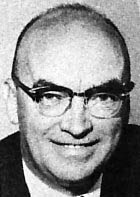
Harry Hanan was a British cartoonist, best known as the creator of the pantomime comic strip Louie which he began in 1947. Louie was a small chap, a loser who was constantly annoyed by life's little vicissitudes and minor moments. Hanan described his mild-mannered character as "the anti-Superman".

Silly Symphonies: The Complete Disney Classics is a book series which reprints Walt Disney's Silly Symphony Sunday comic strip, drawn by several different Disney artists from 1932 to 1945. The strip was published by King Features Syndicate. The strip often introduced new Disney characters to the public, including its first comic character, Bucky Bug. The series was published by The Library of American Comics from 2016 to 2019.
Bozo is the first pantomime-style comic strip, was created by the cartoonist Francis X. Reardon, who penned it beginning from 1921, until his death in 1955. Bozo is called America's original pantomime comic strip. Bozo ran both as a daily comic strip as well as on Sundays.

















